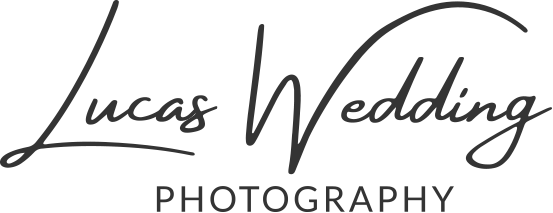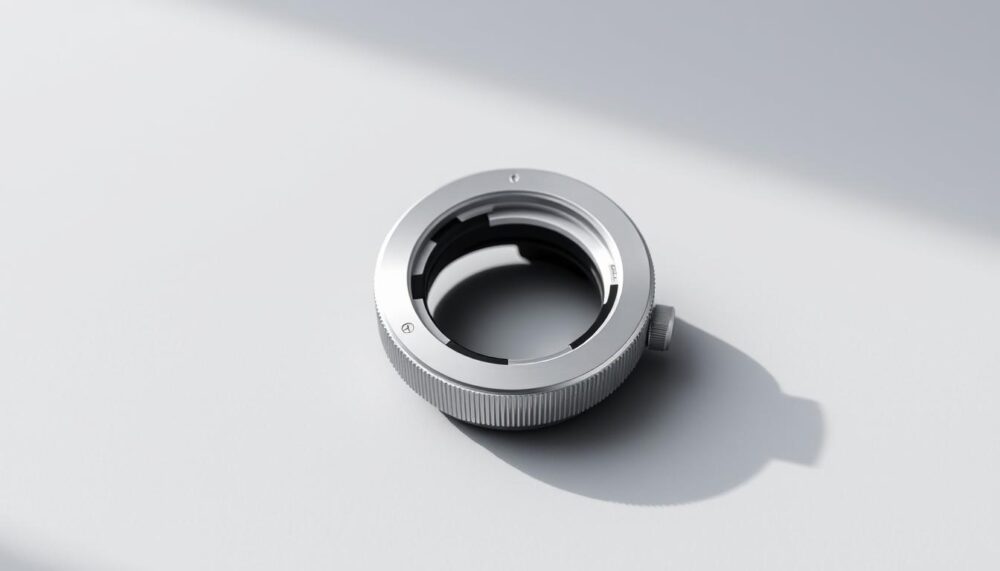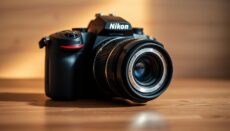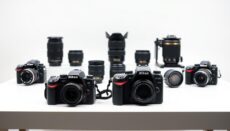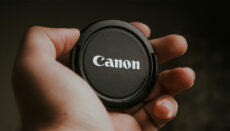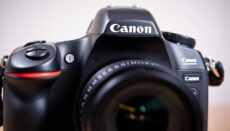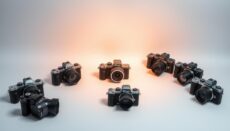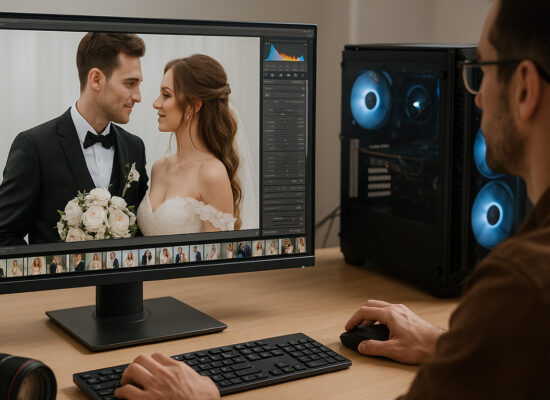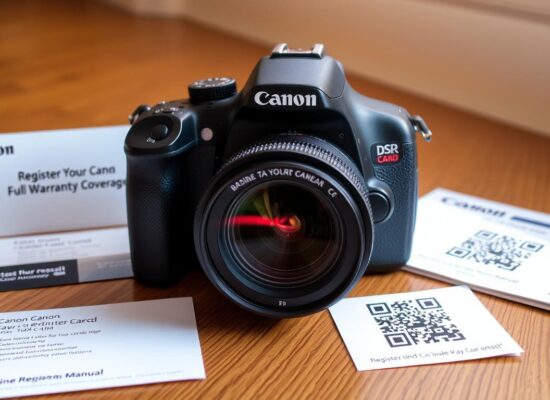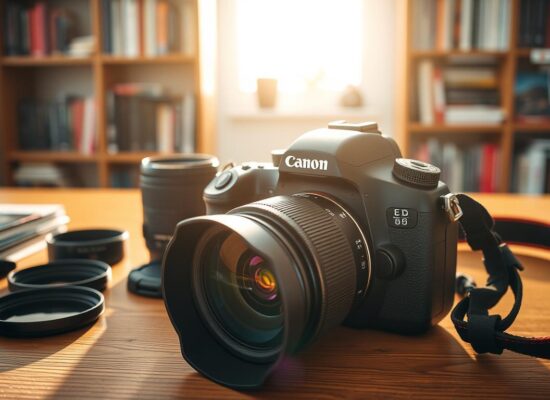Photographers in the UK are increasingly exploring cross-brand compatibility for their equipment. This trend allows them to retain their favourite glass while transitioning to new camera systems. One of the most common questions is whether it’s possible to use F-mount optics on E-mount bodies.
The answer lies in adapters. Devices like the Monster Adapter LA-FE1 make it possible to maintain autofocus and electronic communication between the two systems. This opens up a world of possibilities for photographers who want to keep their existing collection while upgrading their gear.
Testing has shown that adapted performance varies across different types of optics. However, recent firmware updates have improved compatibility, particularly for popular models like the 70-200mm f/2.8 E FL. This makes the transition smoother for professionals and enthusiasts alike.
Key Takeaways
- F-mount optics can be adapted to E-mount bodies with the right hardware.
- The Monster Adapter LA-FE1 maintains autofocus capabilities.
- Firmware updates have enhanced compatibility for specific models.
- Adapting existing glass can be more cost-effective than investing in new native optics.
- Real-world testing has shown promising results in various photography scenarios.
Are Nikon Lenses Compatible with Sony Cameras?
Exploring the potential of using F-mount optics on E-mount systems has become a popular topic among UK photographers. The key to this compatibility lies in understanding the physical and electronic differences between the two systems.
The flange distance—the space between the lens mount and the sensor—varies significantly. Nikon’s F-mount has a 46.5mm flange distance, while Sony’s E-mount measures just 18mm. This difference allows adapters to bridge the gap effectively.
However, electronic communication between the systems poses challenges. Proprietary mount systems require adapters like the Monster Adapter LA-FE1 to maintain autofocus and stabilisation. This adapter supports AF-S lenses, ensuring smooth functionality on Sony Alpha bodies.
“The Monster Adapter LA-FE1 has revolutionised cross-brand compatibility, making it easier for photographers to use their favourite glass on new systems.”
Not all optics are created equal. AF-S lenses, which rely on built-in motors, work seamlessly. Older screw-drive models, however, may not function as well. A case study involving the Nikon 500mm f/5.6 PF demonstrated excellent results for wildlife photography.
Despite these advancements, limitations exist. Current adapters do not support video autofocus, which may be a drawback for videographers. Additionally, third-party Nikon mount optics may not always function as expected.
| Feature | Nikon F-Mount | Sony E-Mount |
|---|---|---|
| Flange Distance | 46.5mm | 18mm |
| Autofocus Support | AF-S Lenses | AF-S via Adapter |
| Video Autofocus | Not Supported | Not Supported |
Firmware updates play a crucial role in ensuring optimal performance. Regular updates can enhance compatibility, making it essential to keep both the adapter and camera body up to date.
Sample images from Flickr showcase the successful adaptation of F-mount optics to E-mount systems. These examples highlight the potential for photographers to expand their creative horizons without investing in new glass.
Understanding Lens Mounts: Nikon F-Mount vs Sony E-Mount
The mechanics behind lens mounts play a crucial role in cross-brand compatibility. One of the most critical factors is flange distance, the space between the lens mount and the camera sensor. This measurement ensures proper optical alignment and focus accuracy.
For instance, the Nikon mount has a flange distance of 46.5mm, while the Sony E-mount measures just 18mm. This significant difference requires adapters to bridge the gap effectively. Adapters typically add 28.5mm to maintain optical alignment, allowing photographers to use their existing glass on new systems.
Understanding these dimensions is vital for lens design. Wide-angle adaptations, for example, may face vignetting issues due to the increased distance. Mechanical tolerances between original and adapted mounts also impact performance, particularly in achieving infinity focus.
Real-world testing with the Nikon 20mm f/1.8G on a Sony A1 body has shown promising results. The adapter maintained sharpness and minimal distortion, proving its effectiveness. Material considerations, such as the use of lightweight aluminium, further enhance durability and precision.
- Flange distance is a critical measurement for optical performance.
- Adapters compensate for dimensional mismatches between mounts.
- Wide-angle adaptations may experience vignetting.
- Mechanical tolerances affect lens collimation and infinity focus.
- Material choices in adapters influence durability and precision.
For visual learners, flange distance comparison charts provide a clear understanding of these technical aspects. This knowledge empowers photographers to make informed decisions when adapting their equipment.
Types of Adapters for Nikon Lenses on Sony Cameras
Understanding the types of adapters available is essential for seamless cross-brand usage. These devices bridge the gap between different systems, allowing photographers to maximise their existing equipment. Two main categories dominate the market: mechanical and smart adapters.
Mechanical Adapters
Mechanical adapters, often referred to as “dumb” adapters, lack electronic contacts. They are simple, affordable solutions for manual focus and aperture control. For example, the Kentfaith option priced at £21.99 is a popular choice for budget-conscious users.
However, these adapters have limitations. They do not support autofocus or EXIF data transfer, making them suitable only for specific scenarios. The K&F Concept stepping ring kit is another example, offering manual adaptation for basic needs.
Smart Adapters
Smart adapters, like the Monster Adapter LA-FE1, offer advanced functionality. They replicate electronic contacts, enabling autofocus, EXIF data, and aperture control. This makes them ideal for professionals seeking full compatibility.
The LA-FE1 supports 10fps continuous shooting with AF-C, a feature highly valued for action photography. Its firmware translation layer ensures smooth command protocols, enhancing performance across various models.
Build quality varies significantly between budget and premium options. While cheaper adapters may suffice for occasional use, investing in a robust adapter ensures durability and precision, especially for heavy telephoto lenses.
“The Monster Adapter LA-FE1 has set a new standard for cross-brand compatibility, offering unparalleled performance and reliability.”
It’s crucial to be cautious of counterfeit adapters in the marketplace. These often lack the necessary precision and durability, potentially damaging your equipment. Always purchase from reputable suppliers to avoid such risks.
Autofocus Performance with Nikon Lenses on Sony Cameras
Achieving precise autofocus performance when adapting optics across systems is a key concern for photographers. The Monster Adapter LA-FE1 has proven to be a reliable solution, offering an 87% hit rate in AF-S mode with static subjects. However, performance varies across different scenarios and modes.
AF-S vs AF-C Modes
In AF-S mode, the adapter excels with static subjects, delivering sharp results. However, AF-C mode is limited to 10fps, compared to the native 30fps on the Sony A1. This makes it less ideal for fast-paced action photography.
Benchmark tests against the Nikon D810 show that AF acquisition times are slightly slower. This is particularly noticeable in challenging conditions, such as low light or complex backgrounds.
Eye AF and Tracking Performance
Eye AF is functional but slower than with native G Master lenses. Tracking performance for birds in flight is also limited, with occasional focus hunting. The bluebell field test with the 70-200mm f/2.8 E FL demonstrated decent results, though not on par with native optics.
Focus breathing in video applications is another consideration. While the adapter handles it reasonably well, it’s not as seamless as native lenses. Custom button programming for focus mode switching can help mitigate some of these issues.
- AF-S mode achieves an 87% hit rate with static subjects.
- AF-C mode is limited to 10fps, impacting action photography.
- Eye AF is functional but slower than native lenses.
- Tracking limitations are evident in birds in flight scenarios.
- Focus breathing is manageable but not perfect for video.
Firmware improvements have enhanced subject recognition, making the combination more reliable over time. For portrait photography, settings recommendations include using AF-S mode for static subjects. For action, AF-C mode is preferable, despite its limitations.
“The Monster Adapter LA-FE1 has set a new standard for cross-brand compatibility, offering unparalleled performance and reliability.”
Legacy AF-S motors may experience hunting issues, particularly in low-contrast scenes. It’s essential to test your specific optics to understand their performance fully. Overall, while not perfect, the adapter provides a viable solution for photographers looking to adapt their existing glass.
Compatibility of Popular Nikon Lenses with Sony Cameras
The ability to use F-mount optics on E-mount systems has opened new creative possibilities for photographers. Recent advancements in adapter technology have made it easier to integrate these optics seamlessly. However, understanding the specifics of compatibility is essential for optimal results.
Popular models like the 20mm f/1.8G, 70-200mm f/2.8E FL, and 500mm PF have been confirmed to work well with adapters. Firmware v04 has further enhanced compatibility, particularly for zoom optics. However, some models, such as the 200-500mm f/5.6E, may experience intermittent communication errors.
Firmware Updates and Lens Support
Firmware updates play a crucial role in ensuring smooth functionality. The Monster Adapter LA-FE1, for instance, has seen significant improvements with recent updates. These updates not only enhance compatibility but also address issues like chromatic aberration and stabilisation handoff.
VR stabilisation in F-mount optics can now be effectively handed off to Sony’s IBIS system. This feature is particularly beneficial for handheld shooting, ensuring sharper images even in challenging conditions.
- Third-party support: Optics from Sigma and Tamron in F-mount are generally supported, though performance may vary.
- Firmware update process: Windows users can easily update their adapters using the provided software.
- Chromatic aberration: While adapters correct most issues, some residual aberrations may still occur.
Prime optics tend to adapt more successfully than zoom models. A case study with the 58mm f/1.4G highlighted its unique rendering characteristics, showcasing the potential of adapted optics for creative photography.
“The Monster Adapter LA-FE1 has revolutionised cross-brand compatibility, offering unparalleled performance and reliability.”
Teleconverter compatibility remains limited, with most adapters unable to support these accessories. For photographers looking to update their optics, guidance on firmware updates for F-mount models is readily available.
Practical Tips for Using Nikon Lenses on Sony Cameras
Adapting equipment across brands requires careful consideration of practical factors. From weather protection to data management, these tips will help you get the most out of your setup.
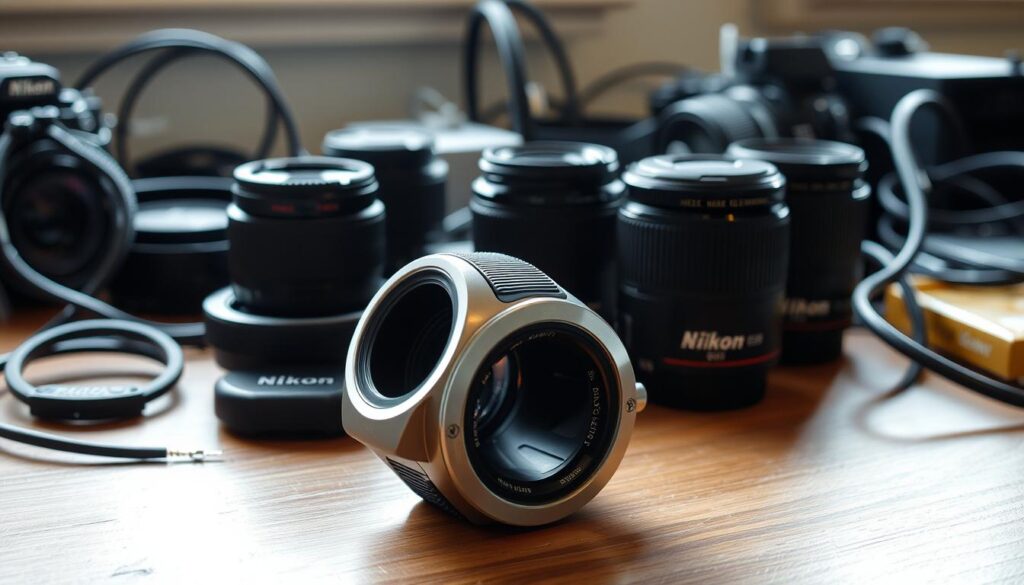
Weather Sealing and Durability
The LA-FE1 adapter lacks weather sealing gaskets, making it vulnerable to moisture and dust. For outdoor use, consider protective measures like rain covers or waterproof camera bags. This ensures your equipment remains safe in challenging conditions.
When using heavy telephoto lenses, rig balancing is crucial. A sturdy tripod or monopod can prevent strain on the adapter and camera mount. Additionally, lens collar mounting best practices should be followed to maintain stability.
EXIF Data and Lens Profiles
Adapted setups often face challenges with EXIF data transfer. A workaround involves using Exiftool for command line editing. This allows you to manually input lens information for accurate metadata.
In Lightroom, manual selection of lens profiles ensures optimal corrections for distortion and vignetting. Step-by-step tutorials are available online to guide you through this process.
- Use protective gear for outdoor shoots to compensate for the lack of weather sealing.
- Balance your rig properly to avoid strain on the adapter and camera.
- Edit EXIF data manually using Exiftool for accurate metadata.
- Select lens profiles in Lightroom to correct optical imperfections.
- Monitor adapter heat dissipation during prolonged use to prevent damage.
Field tests have shown no significant battery drain when using adapters. However, it’s wise to carry spare batteries for extended shoots. Backup protocols for firmware-dependent setups are also recommended to avoid disruptions.
Storage considerations are essential for larger adapted kits. Use padded cases to protect both the adapter and lenses during transport. By following these tips, you can ensure a seamless and efficient photography experience.
Advantages and Disadvantages of Using Adapters
Adapting equipment across different systems offers both opportunities and challenges for photographers. While adapters provide a cost-effective way to use existing glass, they also come with certain limitations. Understanding these pros and cons is essential for making informed decisions.
Cost Savings vs Performance Trade-offs
One of the most significant advantages of using adapters is the potential for cost savings. For example, a £500 adapter can allow you to use a £2000+ lens on a new system, avoiding the need for expensive replacements. However, this comes with performance trade-offs, such as slower autofocus or limited functionality in certain modes.
Calculating the break-even point for lens replacement is crucial. While adapters save money upfront, they may not always deliver the same level of performance as native lenses. This is particularly true for fast-paced photography, where autofocus speed and accuracy are critical.
Image Quality and Potential Issues
When it comes to image quality, adapters generally maintain parity with native DSLR mounting. However, certain issues can arise, such as veiling flare observed in the 50mm f/1.4G against bright skies. Chromatic aberration patterns in edge cases can also affect the final output.
Flare control and colour rendering characteristics vary between adapted and native setups. While adapters handle most optical imperfections reasonably well, some residual issues may persist. Long-term investment considerations should also factor in the potential risks of discontinued adapter support.
- Adapters offer significant cost savings compared to replacing lenses.
- Performance trade-offs include slower autofocus and limited functionality.
- Image quality remains comparable, but issues like veiling flare can occur.
- Chromatic aberration and flare control may vary between adapted and native setups.
- Long-term investment and resale value implications should be considered.
“Adapters provide a bridge between systems, but they come with their own set of trade-offs. Understanding these is key to maximising their potential.”
In summary, while adapters offer a practical solution for cross-brand compatibility, they require careful consideration of both their advantages and limitations. By weighing these factors, photographers can make informed decisions that best suit their needs.
Conclusion
Choosing the right adapter can transform your photography experience, blending creativity with practicality. The Monster Adapter LA-FE1 stands out as a market-leading solution, offering seamless integration for cross-platform setups. Emerging trends in cross-brand compatibility suggest even more advanced options by 2025, making this an exciting time for photographers.
For those transitioning between systems, a hybrid approach can be a smart choice. Test your existing equipment to understand its potential and limitations. While technical compromises exist, the creative possibilities remain vast, allowing you to push boundaries without significant investment.
For further research, explore curated resources on lens filter kits and action photography techniques. By staying informed and experimenting, you can maximise the potential of your gear and elevate your craft.
FAQ
Can I use a Nikon lens on a Sony camera?
Yes, you can use a Nikon lens on a Sony camera with the help of an adapter. These adapters bridge the gap between the Nikon F-mount and Sony E-mount systems.
What is the difference between mechanical and smart adapters?
Mechanical adapters are basic and only allow manual focus and aperture control. Smart adapters, on the other hand, support autofocus and electronic communication between the lens and camera body.
Does autofocus work with Nikon lenses on Sony cameras?
Autofocus functionality depends on the adapter. Smart adapters can enable autofocus, but performance may vary depending on the lens and camera combination.
Are there any firmware updates needed for compatibility?
Some adapters and lenses may require firmware updates to ensure full compatibility and optimal performance with Sony cameras. Always check the manufacturer’s website for the latest updates.
How does flange distance affect lens compatibility?
Flange distance is the space between the lens mount and the sensor. Nikon lenses have a longer flange distance than Sony E-mount cameras, which makes adapters necessary to achieve proper focus.
What are the advantages of using an adapter?
Using an adapter allows you to save money by repurposing existing lenses. It also provides flexibility in lens choice without needing to invest in a new system.
Are there any drawbacks to using adapters?
Adapters can add weight and bulk to your setup. Additionally, autofocus performance and image quality may not match native lens performance.
Can I use weather-sealed Nikon lenses on Sony cameras?
While the lens itself may be weather-sealed, the adapter may not provide the same level of protection. This could compromise the overall weather resistance of your setup.
Will EXIF data be recorded when using Nikon lenses on Sony cameras?
EXIF data recording depends on the adapter. Smart adapters typically retain EXIF data, while mechanical adapters may not.
Is there a loss in image quality when using adapters?
High-quality adapters generally preserve image quality, but cheaper options may introduce issues like vignetting or reduced sharpness.
